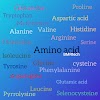Definition of Vitamin A...Principle of Vitamin A | Source And Function Vitamin A
Vitamin A is the name of a group of fat-soluble retinoids, including retinol, retinal, and retinyl esters. Vitamins are substances that your body needs to grow and develop normally.
Or
Vitamin A is a group of unsaturated nutritional organic compounds that includes retinol, retinal, and several pro-vitamin A carotenoids (most notably beta-carotene).
History :- The discovery of vitamin A may have stemmed from research dating back to 1816, when physiologist François Magendie observed that dogs deprived of nutrition developed corneal ulcers and had a high mortality rate. In 1912, Frederick Gowland Hopkins demonstrated that unknown accessory factors found in milk, other than carbohydrates, proteins, and fats were necessary for growth in rats. Hopkins received a Nobel Prize for this discovery in 1929.
Vitamin A can be found in two principal forms in foods:
I) Retinol, the form of vitamin A absorbed when eating animal food sources, is a yellow, fat-soluble substance.
II) The carotenes alpha-carotene, beta-carotene, gamma-carotene; and the xanthophyll beta-cryptoxanthin, but no other carotenoids, function as provitamin A in herbivores and omnivore animals, which possess the enzyme beta-carotene 15,15'-dioxygenase in the intestinal mucosa to cleave and convert provitamin A to retinol.
Vitamin A has multiple functions:
It is important for growth and development, for the maintenance of the immune system, and for good vision.
Vitamin A is needed by the retina of the eye in the form of retinal, which combines with protein opsin to form rhodopsin, the light-absorbing molecule necessary for both low-light and color vision.
A also functions in a very different role as retinoic acid, which is an important hormone-like growth factor for epithelial and other cells.
Sources :-
Vitamin A is found in many foods, including the following list. Bracketed values are retinol activity equivalences (RAEs) and percentage of the adult male RDA, per 100 grams of the foodstuff (average). Conversion of carotene to retinol varies from person to person, and bioavailability of carotene in food varies.
Metabolic functions :-
Vitamin A plays a role in a variety of functions throughout the body, such as:
1) Vision
2) Gene transcription
3) Immune function
4) Embryonic development and reproduction
5) Bone metabolism
6) Skin and cellular health
7) Teeth
8) Mucous membrane






0 Comments